Research
Research
Research
The Path to Bomber Command: Part 1
In the early 1940s many young men wanted to be pilots, especially with the Battle of Britain raging. The RNZAF acceptance age for overseas service was 18 (it was 21 for the Army) and the dual incentive of ocean liner travel to distant shores and flying were very attractive, especially as most had never been at sea or flown before, in fact many had never even ridden on a train.
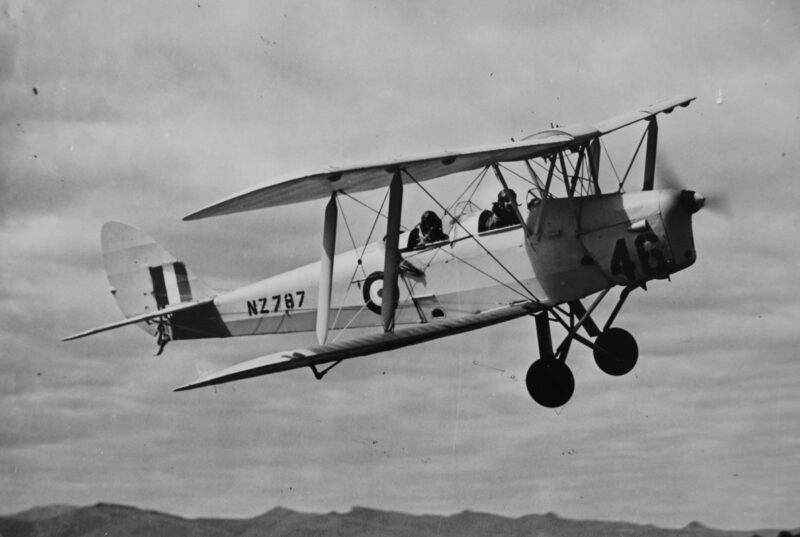
The aircraft most RNZAF pilots learnt to fly on, the de Havilland Tiger Moth. made by de Havilland at Rongotai in Wellington. 181 of these trainers were built for the RNZAF at the de Havilland factory between 1939 and 1945.
But prior to this “great adventure” a war of paper had to be waged. Illustrated here are examples of some of the forms and declarations needed to be accepted into the Air Force. If an Army marched on its stomach, seemingly the Air Force flew on the wings of bureaucracy. For many who had, at age 18, become Territorials under Army control, they first had to obtain their release from the Army. This was just the beginning of the process.
You can just imagine the frustration of so many young men at the process, desperate as they were to begin training and ultimately take a crack at the “Hun”. Here are a few examples of their paper trail.
The first step was an application for war service to the RNZAF. The Air Department of the RNZAF would in turn acknowledge receipt of the application for service in either the RAF or RNZAF. In this letter of July 1940, it is advised that the Air Force “has a long list of candidates for flight training” and that “it will not be possible to arrange for the training of recent applicants before the latter part of next year”
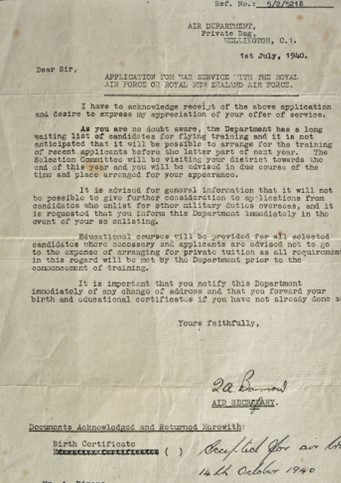
Receipt of application for war service with the Royal Air Force or the Royal New Zealand Air Force to A. Divers of Dunedin, dated 1 July 1940.
(Credit: NZBCA Archives)
Next step – an initial interview with the RNZAF Selection Committee.

A letter from the Air Secretary confirming the date and time for the applicant’s interview with the RNZAF Selection Committee, possibly to A.
Divers of Dunedin.
(Credit: NZBCA Archives)
Educational courses were provided for selected candidates where necessary. Aircrew volunteers who had not completed matriculation exams at school, it was a pre-entry requirement to undertake and pass a twelve week long mathematics course. Many did this by correspondence or technical colleges at night, while working their day jobs.
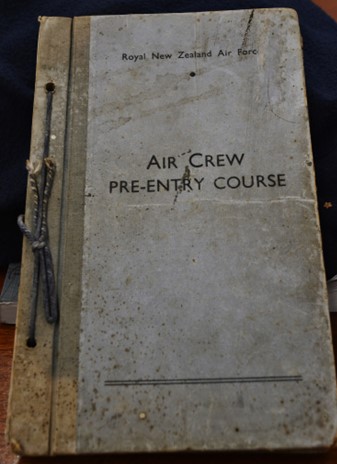
An example of an air crew pre-entry course book.
(Credit: NZBCA Archives)
The next step in the recruitment process was flight training acceptance. Note the warning in letter below that ‘failure to report for training when and when required will render you liable to the penalties attached to desertion.
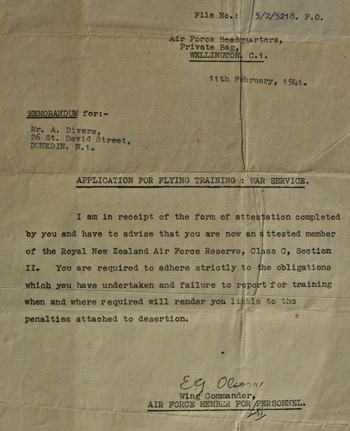
Flight training acceptance letter for A. Divers letter dated 11 February 1941.
(Credit: NZBCA Archives)
Attestation meant the beginning of military service. Form AF 61 (below) confirms that Ron Chambers (NZ403758) is now an attested member of the RNZAF. Medicals, dental checks and more interviews would follow.
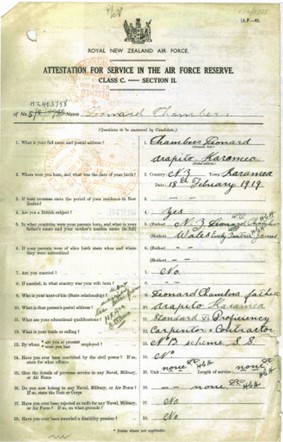
Attestation Form AF 61 for Ron Chambers.
(Credit: NZBCA Archives)
Every RNZAF serviceman had an HQ Personnel file. This recorded every posting, medical and promotion during their service. Often pages long, these records are now a great source of data for historians.
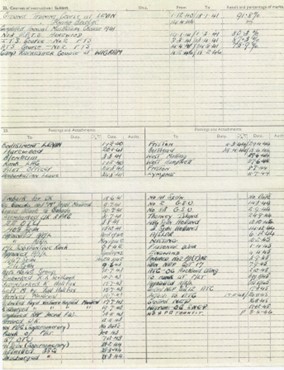
Personnel file record.
(Credit: NZBCA Archives)
November 3, 2024